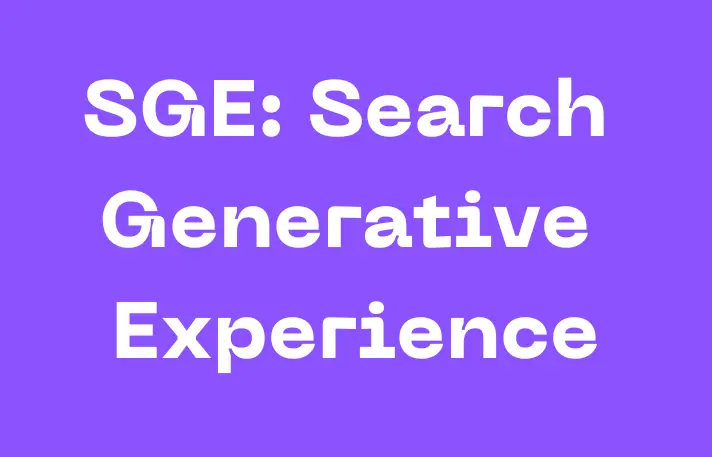AI is moving in every part of society and will change our behaviour in many ways. One of the things that will change is the way we search. Google announced a massive change in the way people will search in the future. The name is SGE and means basically Search Generative Experience.
Supercharging Search with generative AI
What is Google SGE?
Google SGE represents a significant change in search technology. It’s designed to provide users with direct answers and summaries at the top of the search results, aggregating information from various sources into a cohesive overview. This approach not only speeds up the information retrieval process but also simplifies the discovery of relevant data.
How to Enable Google SGE
To experience this feature, users need a Google account and the Chrome browser. SGE is accessible to users over 18 in over 120 countries. Enabling it requires navigating to the “Labs” section within Google’s settings, where users can toggle SGE on, transforming their search experience into something much more dynamic and intuitive.
How Google SGE Works
At its core, Google SGE operates on advanced generative AI, specifically Google’s Pathways Language Model 2 (PaLM 2). This technology allows Google to digest a user’s query, pull relevant information from a vast database, and generate a concise, accurate response. For example, a search for “best chocolate chip cookie recipe” might yield a summarized response highlighting top recipes, each with a brief description, directly in the search results.
Benefits of Google’s Generative AI Search
- Efficiency: Users receive quick overviews that make understanding complex topics easier without wading through multiple articles.
- Interactivity: The platform suggests logical follow-up questions, creating a conversational experience that helps users dive deeper into topics of interest.
- Direct Access to Information: By summarizing key points, Google SGE reduces the time spent searching for credible answers.
Challenges and Considerations
While promising, Google SGE is not without its challenges:
- Geographic and Language Limitations: Currently, SGE’s availability is limited to certain regions and languages, which may restrict access for some users.
- Accuracy Concerns: As with any AI-driven tool, there’s a risk of inaccuracies, especially in the early stages of deployment. Google acknowledges this with disclaimers about potential variability in information quality.
Comparison with Other AI Tools
While Bing AI integrates ChatGPT-like conversational capabilities into its search engine, Google SGE focuses more on delivering factual, direct responses rather than engaging in back-and-forth dialogue. This makes SGE particularly effective for users seeking quick facts rather than a conversational experience.
Impact on SEO
The introduction of SGE marks a pivotal shift in search engine optimization (SEO). Content creators may need to adapt their strategies to ensure visibility in a new era where direct answers are prioritized over traditional search listings. This might involve focusing more on clarity, accuracy, and depth in content to be recognized and summarized by SGE.
Optimizing for Google SGE
To stay relevant in the age of generative AI search, content developers should consider several strategies:
- Focus on Long-Tail Keywords: These are more likely to match the detailed queries that generative AI is designed to respond to.
- Enhance Content Quality: High-quality, well-sourced content is more likely to be featured in SGE summaries.
- Implement Structured Data: This helps Google understand the context and details of content, making it easier to feature in AI-generated responses.
Google’s Search Generative Experience is redefining how we interact with digital information, making searches quicker, more intuitive, and user-friendly.
